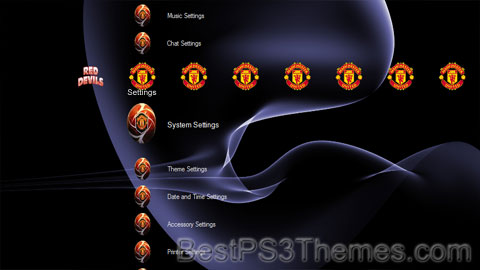Manchester theme by zlatan-62100
Download: Manchester.p3t

(3 backgrounds)
Manchester (/ˈmæntʃɪstər, -tʃɛs-/ )[6][7] is a city and metropolitan borough of Greater Manchester, England, which had a population of 552,000 at the 2021 census.[5] It contributes to one of the largest metropolitan populations in the United Kingdom as a part of Greater Manchester, which has a population of approximately 2.92 million.[8] It is bordered by the Cheshire Plain to the south, the Pennines to the north and east, and the neighbouring city of Salford to the west. The city borders the boroughs of Trafford, Stockport, Tameside, Oldham, Rochdale, Bury and Salford.
The history of Manchester began with the civilian settlement associated with the Roman fort (castra) of Mamucium or Mancunium, established in about AD 79 on a sandstone bluff near the confluence of the rivers Medlock and Irwell. Throughout the Middle Ages, Manchester remained a manorial township but began to expand "at an astonishing rate" around the turn of the 19th century. Manchester's unplanned urbanisation was brought on by a boom in textile manufacture during the Industrial Revolution[9] and resulted in it becoming the world's first industrialised city.[10] Historically part of Lancashire, areas of Cheshire south of the River Mersey were incorporated into Manchester in the 20th century, including Wythenshawe in 1931. Manchester achieved city status in 1853. The Manchester Ship Canal opened in 1894, creating the Port of Manchester and linking the city to the Irish Sea, 36 miles (58 km) to the west. The city's fortune declined after the Second World War, owing to deindustrialisation, and the IRA bombing in 1996 led to extensive investment and regeneration.[11] Following considerable redevelopment, Manchester was the host city for the 2002 Commonwealth Games.
The city is notable for its architecture, culture, musical exports, media links, scientific and engineering output, social impact, sports clubs and transport connections. Manchester Liverpool Road railway station is the world's oldest surviving inter-city passenger railway station.[12] At the University of Manchester, Ernest Rutherford first split the atom in 1917; Frederic C. Williams, Tom Kilburn and Geoff Tootill developed the world's first stored-program computer in 1948; and Andre Geim and Konstantin Novoselov first isolated graphene in 2004.
Manchester has a large urban sprawl, which forms from the city centre into the other neighbouring authorities; these include The Four Heatons, Failsworth, Prestwich, Stretford, Sale, Droylsden, Old Trafford and Reddish. The city is also contiguous with Salford and its borough but is separated from it by the River Irwell. This urban area is cut off by the M60, also known as the Manchester Outer Ring Road, which runs in a circular around the city and these areas. It joins the M62 to the north-east and the M602 to the west, as well as the East Lancashire Road and A6.
Toponymy[edit]
The name Manchester originates from the Latin name Mamucium or its variant Mancunio and the citizens are still referred to as Mancunians (/mænˈkjuːniən/). These names are generally thought to represent a Latinisation of an original Brittonic name. The generally accepted etymology of this name is that it comes from Brittonic *mamm- ("breast", in reference to a "breast-like hill").[13][14] However, more recent work suggests that it could come from *mamma ("mother", in reference to a local river goddess). Both usages are preserved in Insular Celtic languages, such as mam meaning "breast" in Irish and "mother" in Welsh.[15] The suffix -chester is from Old English ceaster ("Roman fortification", itself a loanword from Latin castra, "fort; fortified town").[14][13]
The city is widely known as "the capital of the North".[16][17][18][19]
History[edit]
Early history[edit]
The Brigantes were the major Celtic tribe in what is now known as Northern England; they had a stronghold in the locality at a sandstone outcrop on which Manchester Cathedral now stands, opposite the bank of the River Irwell.[20] Their territory extended across the fertile lowland of what is now Salford and Stretford. Following the Roman conquest of Britain in the 1st century, General Agricola ordered the construction of a fort named Mamucium in the year 79 to ensure that Roman interests in Deva Victrix (Chester) and Eboracum (York) were protected from the Brigantes.[20] Central Manchester has been permanently settled since this time.[21] A stabilised fragment of foundations of the final version of the Roman fort is visible in Castlefield. The Roman habitation of Manchester probably ended around the 3rd century; its civilian settlement appears to have been abandoned by the mid-3rd century, although the fort may have supported a small garrison until the late 3rd or early 4th century.[22] After the Roman withdrawal and Saxon conquest, the focus of settlement shifted to the confluence of the Irwell and Irk sometime before the arrival of the Normans after 1066.[23] Much of the wider area was laid waste in the subsequent Harrying of the North.[24][25]












